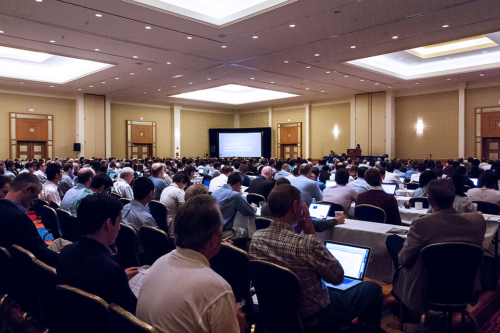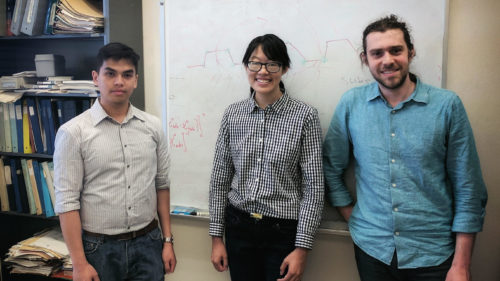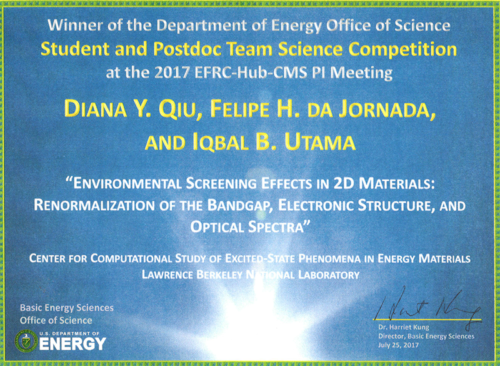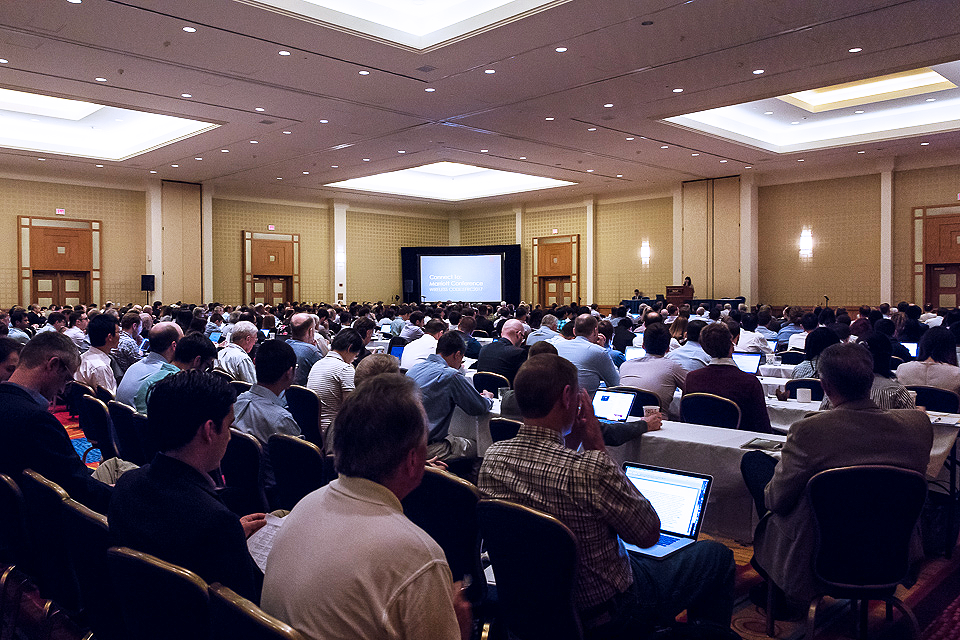 July 24-25, 2017 in Washington D.C.
July 24-25, 2017 in Washington D.C.
- By invitation only
- Participants included the Energy Frontier Research Centers, Energy Innovation Hubs, Computational Materials Sciences Awards, and DOE staff.
- Over 600 attendees from the EFRCs, Hubs, CMS, and DOE: 250 senior members and 235 early career scientists from more than 95 institutions in 32 states, one foreign country, and Washington D.C.
- 43 center highlight talks, 147 technical talks, and 218 posters
- Plenary session, Diversity in Energy Science Breakfast, Early Career Network Organized Events, Intersection of Sounds and Science Podcast Contest, and Student and Postdoc Team Science Competition
- energyfrontier.us
- PI Meeting Book (pdf)
- Team Science Contest (pdf)
CONGRATULATIONS TO THE WINNERS OF THE GRADUATE STUDENT AND POSTDOC TEAM SCIENCE CONTEST
Early Career scientists are a significant component of the Energy Frontier Research Center (EFRC), Energy Innovation Hub (Hub), and Computational Materials Sciences Award (CMS) programs. Altogether, these programs involve more than 900 graduate students and 800 postdoctoral researchers. To highlight their accomplishments and further the development of the future scientific energy workforce, the Department of Energy’s Office of Basic Energy Sciences (BES) sponsored a Student and Postdoc Team Science Contest as part of the 2017 EFRC-Hub-CMS Principal Investigators’ Meeting in Washington, D.C. on July 24-25, 2017. Each Director was invited to nominate a team of two or more graduate student and/or postdoctoral researchers to present a joint talk about their center research that included both theory and experiment. The DOE EFRC, Hub, and CMS management teams selected 16 finalists from more than 25 nominations. In the following pages, early career team members are highlighted in orange; those who presented are underlined. At the meeting, teams of DOE program managers selected the top six teams based on how well the research exemplified the opportunities provided by the center funding modality, scientific excellence, integration of theory and experiment, topical diversity, and quality of the presentation. The winners received an award certificate from Harriet Kung, Associate Director of the DOE Office of Basic Energy Sciences, during a ceremony at the end of the meeting.

ENVIRONMENTAL SCREENING EFFECTS IN 2D MATERIALS: RENORMALIZATION OF THE BANDGAP, ELECTRONIC STRUCTURE, AND OPTICAL SPECTRA
[CMS – C2SEPEM] Diana Y. Qiu, Felipe H. da Jornada, M. Iqbal B. Utama, Feng Wang, Steven G. Louie
Lawrence Berkeley National Laboratory and UC Berkeley
Few-layer black phosphorus (BP) is a highly promising material for optoelectronic and clean energy technologies. In order to avoid degradation in ambient conditions, it has become common practice to encapsulate these quasi-2D BP devices with wide bandgap insulators. While it is generally assumed that this encapsulation does not significantly affect their electronic and optical properties, we show, in a collaborative effort between ab initio theory and experiment, that the opposite is true [1,2].
We performed the first optical absorption measurements on few-layer BP encapsulated between a sapphire substrate and a boron nitride capping layer. Concurrently, in accordance with the experimental setup, we developed new theoretical and computational techniques to incorporate the screening environment from the substrate and the capping layer in our ab initio GW and GW-BSE calculations. We find that, contrary to previous belief, BP is exceptionally sensitive to environmental screening. We showed for the first time that encapsulation reduces the exciton binding energy by as much as 70%, and dramatically changes the nature of the excited states and the qualitative features of the absorption spectrum. This can be seen in the figure below, where we plot the difference between the induced charge density for encapsulated monolayer BP and isolated BP, given an external test charge at “X”

Our discovery and understanding of large environmental screening effects open new pathways for tuning the properties of low-dimensional materials by treating screening and confinement as separately tunable degrees of freedom. Furthermore, the new methods we developed for including substrate screening push the frontiers of state-of-the-art many-body GW and GW-BSE calculations, allowing us not only to accurately account for the experimental environment, but also to calculate excited-state phenomena in incommensurate, layered heterostructures. Finally, in a similar synergetic setup between experiment and theory, we are now studying the role of substrates in the electronic properties of few-layer transition metal dichalcogenides (TMDs).
References: [1] L. Li, J. Kim, C. Jin, G. J. Ye, D. Y. Qiu, F. H. da Jornada, Z. Shi, L. Chen, Z. Zhang, F. Yang, K. Watanabe, T. Taniguchi, W. Ren, S. G. Louie, X. H. Chen, Y. Zhang, F. Wang, Nature Nanotechnology 12, 21 (2016). [2] D.Y. Qiu, F.H. da Jornada, and S. G. Louie, submitted to Nano Letters.
Contributions: D.Y.Q., F.H.J., S.G.L. developed the theory and performed ab initio calculations. M.I.B.U. and F. Wang fabricated and characterized the (TMDs) samples and analyzed the absorption spectra.



